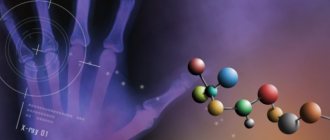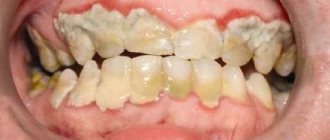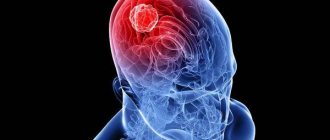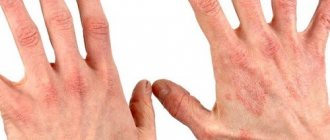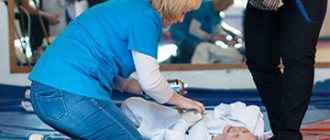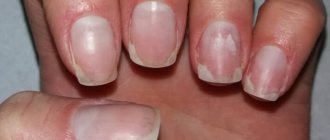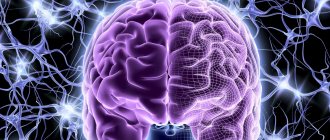Nystagmus is a rapid, rhythmic, involuntary oscillatory movement of the eyeballs that can be of physiological or pathological origin.
Pathological nystagmus of the eyes can be caused by weakness of vision, damage to various brain structures, and intoxication with drugs and narcotics.
Nystagmus cannot be treated. In this condition, therapy for the underlying disease, taking vitamins and antispasmodics is indicated.
Causes of pathology
Twitching of the eye provokes hypertonicity of the labyrinth of the ear on the left or right side.
Nystagmus of the eyeball is characterized as involuntary oscillatory movements and can be congenital, which is diagnosed in a child under one year old, or acquired. It can occur in healthy people, but most often occurs with damage to the central nervous system or against the background of other diseases. Neurology and physiology are sciences that study the nervous system and the function of the body’s life processes, depending on the type of illness, distinguishes the following causes:
The symptom can be observed in albino babies.
- Congenital nystagmus in children: birth trauma;
- severe infectious diseases of the mother suffered during pregnancy;
- congenital damage to retinal cells that are responsible for light sensitivity;
- prematurity;
- pathologies of the baby’s kidneys or brain;
- albinism.
- observation of a rapidly moving object;
- tumors of the eyes and brain;
Symptoms of nystagmus
Nystagmus is rapid uncontrolled eye movement. Depending on the direction, horizontal, vertical, rotational and diagonal nystagmus are distinguished. Most often, horizontal movement is detected.
The amplitude of oscillations can be the same in both directions, and then they speak of pendulum-like nystagmus. Sometimes the fast phase of nystagmus prevails over the slow one, and in this case the patient is forced to turn his head in the direction of rapid movements of the eyeballs. At the same time, the weakness of the extraocular muscles is compensated, and the range of eye movements decreases. If the head is turned to the left, there is weakness in the external rectus muscle of the left eye and the internal rectus muscle of the right eye, and the nystagmus itself is called left-sided.
There is also a mixed type, when one patient has both pendulum-like and jerky eye movements.
The amplitude of eyeball movements during nystagmus can be different:
- if it is more than 15°, they speak of sweeping or large-caliber nystagmus;
- with a deviation within 5 – 15°, the nystagmus is considered medium-caliber;
- if the deviation angle is less than 5°, this is minor nystagmus.
Finally, this sign can be detected when the patient looks straight ahead, or towards the fast or slow phase.
Classification of the disease
Doctors divide nystagmus of the visual organ into several types, the classification of which is shown in the table:
| View | Characteristics |
| Horizontal small-swing nystagmus | Direction of eye movement - horizontal, left/right |
| Occurs when the internal parts of the ear, medulla oblongata and posterior parts of the brain are damaged | |
| Large-spanning clonic | Range of motion - from left to right |
| Appears as a result of inflammation of the ear with the spread of a purulent process to the cerebellum | |
| Caloric | Occurs when artificial temperature influences the ear labyrinth (ingress of hot or cold liquid) |
| Pressorny | Nystagmoid eye movements occur due to condensation of air in the ear canal |
| Optokinetic nystagmus | Characterized by the movement of the visual organ when observing rapidly moving objects |
| Dissociated spontaneous nystagmus | With this type there is no directionality of movements |
| Installation (lateral) | Movement of the eyeballs occurs only when the eyes are moved to the side due to overstrain of the organ muscles |
| Arbitrary | Trembling appears against the background of constriction of the pupil |
| May be accompanied by facial tics or grimaces | |
| Normally, the duration is calculated in seconds. | |
| Rotatory nystagmus (rotational) | Characterized by rotating eye movements |
| Jerky | The eyeball moves slowly in one direction and quickly in the opposite direction. |
| Pendulum-shaped | The movement of the eye with this type is striking upward and descending downwards. |
| Periodic alternating | Occurs when looking straight ahead and at regular intervals the eye moves up and down |
| Vertical nystagmus | Characterized by up/down twitching of the eyeball |
Symptoms: how does the disease manifest itself?
Against the background of this symptom, a headache develops.
Nystagmus in newborns can be observed up to 1-1.5 months, since during this period the eye muscles are still weakened and the child’s gaze does not fully focus on the object. This condition is not considered a pathology and can go away on its own after 2 months of age. If after this period the wandering gaze remains, this is a sign of deviation. Adults notice that the nystagmus decreases with a certain position of the head or a change in gaze. In addition, the disease has the following symptoms:
- increased photosensitivity;
- decreased vision and inability to clearly concentrate;
- headache;
- blurry image;
- feeling of movement or tremor in the eye;
- impaired coordination of movements.
Complications
Among the most common complications is convergent strabismus, which often develops with long-term nystagmus. Typically, the progression of strabismus depends on the underlying causes that caused both the nystagmus and the problem with eye alignment itself. Mixed astigmatism and amblyopia may also occur.
Nystagmus is complicated by a number of vestibular and neurological symptoms: problems with coordination, headaches and attacks of dizziness, and compensatory muscular torticollis may develop.
Alena Paretskaya, pediatrician, medical columnist
2, total, today
( 37 votes, average: 4.78 out of 5)
Increased intraocular pressure: symptoms, diagnosis, treatment
Allergic conjunctivitis in a child: symptoms and treatment
Related Posts
What are the consequences?
If nystagmus is not treated promptly, the condition leads to the following consequences:
Often in childhood the disease is complicated by myopia.
- Astigmatism. It is characterized by a change in the shape of the cornea, due to which objects are focused on the retina incorrectly and are perceived distortedly.
- Lazy eye syndrome. The main symptom is the cessation of the eye's participation in the visual process. The condition is reversible and causes decreased vision.
- Torticollis. Due to changes in head position to improve gaze focusing, musculoskeletal deformity of the neck occurs.
- Ataxia. Characterized by impaired coordination of movements, balance, gait, and fine motor skills disorder.
- Myopia. It develops mainly in children and is manifested by myopia, when objects in the distance are seen blurry, but close up clearly.
How is diagnosis carried out?
An ophthalmologist can determine right-sided or left-sided nystagmus. You may also need to consult a neurologist, ENT specialist, or neurosurgeon. The specialist examines the medical history for the presence of concomitant pathologies, which diseases may cause fluctuations in the eyeballs. The disease is determined using a test during which the patient must focus his gaze on an object shown and moved by the doctor. In addition, diagnostic procedures are prescribed, such as:
Refractometry will be useful to the patient when undergoing an examination of the organs of vision.
- ophthalmoscopy;
- echoencephalogram;
- microperimetry;
- electronystagmography;
- refractometry;
- visometry;
- computer and magnetic resonance imaging of the brain;
- general clinical blood and urine tests to identify toxins that could provoke nystagmus.
Treatment: which methods are effective?
Drug therapy
All medications are prescribed by a doctor; self-medication is prohibited. Rotational congenital horizontal nystagmus in children can only be cured with conservative methods. The doctor prescribes special glasses to improve the visual function of the eye. To treat nystagmus in adults, the medications shown in the table are used:
| Drug group | Name |
| Anticonvulsants | "Phenobarbital" |
| "Carbamazepine" | |
| "Acediprol" | |
| "Difenin" | |
| "Hexamidine" | |
| "Ethosuximide" | |
| "Mydocalm" | |
| "Clonazepam" | |
| Antiepileptics | "Valparim" |
| "Convulex" | |
| "Depamide" | |
| "Sabril" | |
| "Diazepam" | |
| "Seduxen" | |
| "Convulsan" | |
| "Epimax" |
Surgical intervention
Laser therapy will help reduce the manifestation of the disease.
In some cases, surgery is required to eliminate the sign of nystagmus. The essence of the method is to weaken a strong muscle and make a weak one stronger. In this way, relative peace of the eyes is achieved. Pathological trembling of the eyeball can also be eliminated using radiotherapy and laser therapy. However, the pathology is not completely curable.
Therapeutic exercises
To strengthen the eye muscles and improve vision, the following complex of eye gymnastics is recommended:
- squeezing/unclosing eyelids;
- frequent blinking;
- horizontal and vertical eye movement;
- moving the gaze diagonally: from the top corner of the room to the bottom;
- bringing the eyes to the nose.
Any exercise should be performed at least 10 times each.
Features in children
In newborns, twitching of the eyeballs is considered a physiological phenomenon. The visual system in children in the first month of life is not yet fully developed, and visual acuity remains reduced.
Read in a separate article: Eye nystagmus: what it is, symptoms and types, causes and treatment
But by the end of the first month of life, the child begins to focus his gaze on an object and follow the toys. If this does not happen and the twitching continues, an ophthalmologist can make a diagnosis during a routine examination.
Until one year of age, no specific treatment is required, unless it becomes obvious that the small-sweep nystagmus is caused by a pathological cause. But even in this case, with timely and adequate therapy, the situation is completely normalized, and visual function remains preserved. The child does not experience problems with social adaptation or the learning process in educational institutions.
Prevention and prognosis
A patient with a damaged optic nerve should not expect a complete recovery.
In the initial stages, voluntary (voluntary) and other types of nystagmus can be completely cured. In more complex cases, with strict adherence to the doctor’s recommendations, significant relief of the condition is possible, so the prognosis is favorable. If the medical history is aggravated by serious brain diseases or damage to the optic nerve, full recovery is not predicted.
To avoid the development of the disease, you should promptly consult a doctor and undergo an examination if there is damage to the brain structures, injury to the eyes or ear structures. It is also recommended to consult a specialist if coordination of movements is impaired, after severe infections or toxic poisoning.
Etiology
The cause of this eye disease can be both external etiological factors and certain diseases of the brain and vestibular apparatus.
Diseases that can provoke such a disorder include:
- hydrocephalus;
- benign or malignant neoplasms in the brain;
- deterioration of cerebral circulation;
- pathologies of the development of the skull and brain;
- pathological processes that are characterized by the breakdown of myelin;
- infectious processes in the brain and central nervous system.
Possible causes of ocular nystagmus
Pathological processes in the vestibular apparatus, which also lead to spontaneous or vestibular nystagmus, include:
- neuroma of the vestibular nerve;
- inflammation of the inner ear;
- inflammation of the vestibular nerves.
In addition, the development of spontaneous nystagmus may be due to the following etiological factors:
- heredity - in this case, most often, it is implied that nystagmus in newborns is of a benign form;
- poisoning with toxic substances or sleeping pills;
- sharp deterioration of vision - in this case, wearing glasses or lenses eliminates the pathology.
Nystagmus of unknown etiological nature is very rarely diagnosed.



